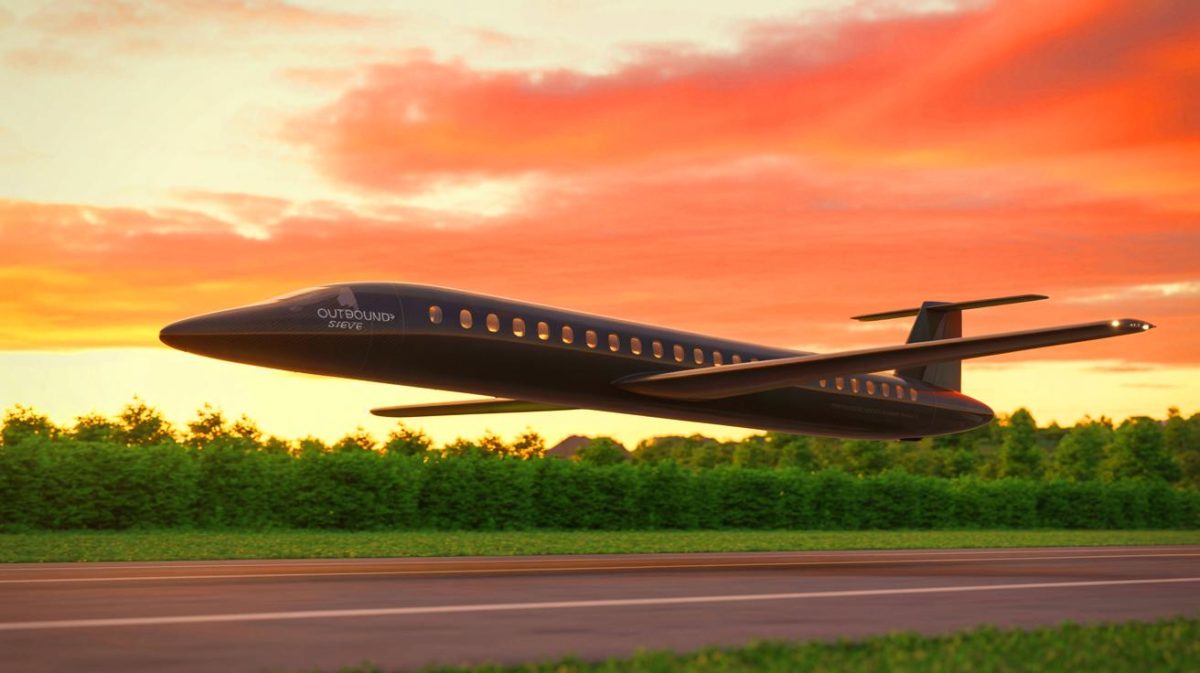| IN A NUTSHELL |
|
Outbound Aerospace has taken its first significant step towards revolutionizing air travel. The Seattle-based startup has successfully completed its maiden test flight with a small-scale prototype, marking a pivotal moment in its journey to create a new kind of passenger airplane. Backed by a recent influx of funding, the company is poised to push the boundaries of aerospace innovation. This article delves into the details of this groundbreaking test flight, the challenges faced by the startup, and the futuristic vision that Outbound Aerospace holds for the aviation industry.
A Milestone Flight at Pendleton UAS Range
Outbound Aerospace’s demonstrator plane, aptly named STeVE, took to the skies for its first test flight at the Pendleton UAS Range in Oregon. This 22-foot wingspan aircraft is a scaled version of what the company envisions for the future. Weighing 300 pounds, STeVE is a remote-controlled aircraft designed to validate the company’s innovative fabrication process. The brief 16-second flight may seem modest, but it holds immense significance for the fledgling aerospace company. The test successfully demonstrated that the fabrication techniques employed could produce a flyable carbon-fiber aircraft, paving the way for more ambitious projects.
Jake Armenta, the co-founder and chief technology officer, expressed the excitement and relief following the successful flight. Despite facing skepticism from various corners, Armenta and his team remained steadfast in their belief in the project’s potential. The recent flight serves as a testament to their perseverance and innovative approach, which could redefine the way passenger aircraft are built in the future.
Facing Skepticism and Securing Funding
Despite the successful test flight, Outbound Aerospace has faced its share of skepticism. In the early stages, the idea of building a new type of passenger airplane seemed far-fetched to many potential investors. Armenta shared that he was literally laughed out of investors’ rooms in Seattle. However, the team’s determination and innovative spirit have gradually turned the tide. The startup has managed to secure crucial funding of $1.15 million in pre-seed investments through strategic partnerships and private backers.
Key contributors to this funding include $500,000 from Blue Collective, an equal amount from Antler, and additional backing from private investors. This financial support has enabled Outbound Aerospace to expand its team to a full-time staff of five, with additional contractors contributing expertise as needed. The newly acquired funds will play a vital role in scaling up operations and advancing the development of the next prototype, which promises to be even more ambitious than STeVE.
Innovative Fabrication Techniques
The cornerstone of Outbound Aerospace’s approach lies in its innovative fabrication techniques. Armenta and his team have pioneered three distinct methods for working with carbon fiber, two of which are highly scalable. The use of large, 3D-printed molds and jigs has allowed for significant reductions in lead and production times, enabling faster and more efficient aircraft assembly. This breakthrough in fabrication not only holds promise for Outbound’s projects but could also have wider implications for the aerospace industry as a whole.
By leveraging these new techniques, Outbound Aerospace aims to produce larger aircraft, such as the planned 171-foot wingspan Olympic airliner. This ambitious project, designed to carry up to 250 passengers, is set to compete with established models like the Boeing 757. The scalability and efficiency of the fabrication process are crucial to bringing this vision to fruition, and Outbound Aerospace is committed to proving its viability on a grand scale.
The Road Ahead: Next Steps and Future Ambitions
Following the success of STeVE, Outbound Aerospace is already setting its sights on the next phase of development. Plans are underway for the construction of a new test aircraft that will boast double the wingspan of the current model. This next prototype will transition from electric power to a turboprop engine, aligning with the company’s long-term vision of developing a 19-seat business jet. Armenta is confident that this concept will generate significant excitement and interest within the aviation community.
The upcoming aircraft will be built entirely in the Seattle area, reflecting the company’s commitment to local manufacturing and innovation. As Outbound Aerospace continues to push boundaries, the team remains focused on their ultimate goal of redefining air travel. The path forward is fraught with challenges, but the spirit of innovation and determination that drives the company promises to carry them above and beyond current limitations.
Outbound Aerospace stands at the cusp of potentially transformative changes in the aviation sector. With successful test flights and innovative fabrication techniques, the company’s ambitious goals are gradually becoming attainable. As they continue to develop and refine their technology, one must wonder: What will the future of air travel look like, and how will startups like Outbound Aerospace shape that future?
Did you like it? 4.7/5 (23)







Félicitations à Outbound Aerospace pour ce premier test réussi! 🚀 Quelle est la prochaine étape? 😊
Pourquoi choisir un nom aussi bizarre que STeVE pour un avion? 🤔
1.15 million de dollars, c’est pas un peu léger pour un projet de cette ampleur?
Magnifique! Hâte de voir ce que l’avenir leur réserve. 💪
Est-ce que ces techniques de fabrication innovantes seront partagées avec d’autres entreprises?
Bravo l’équipe! J’espère que ça va voler plus de 16 secondes la prochaine fois. 😄
Pourquoi ne pas utiliser directement un turboprop au lieu de commencer avec un modèle électrique?